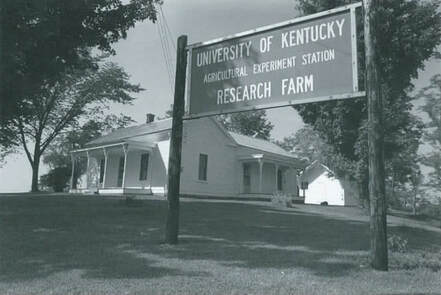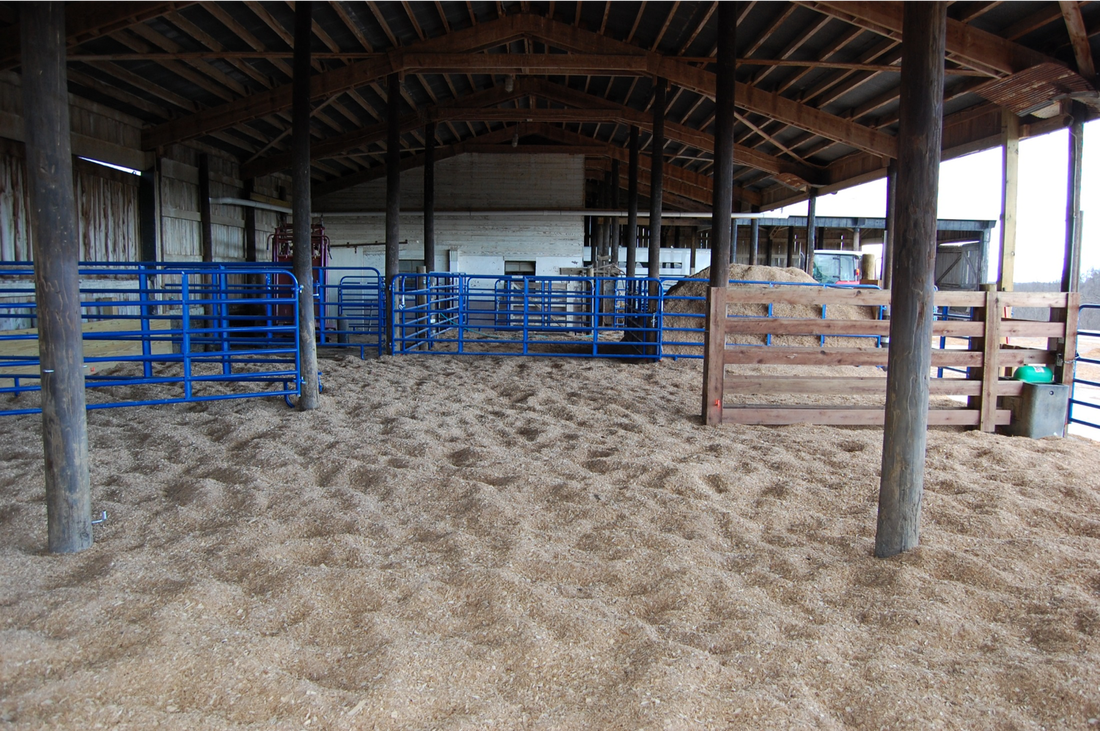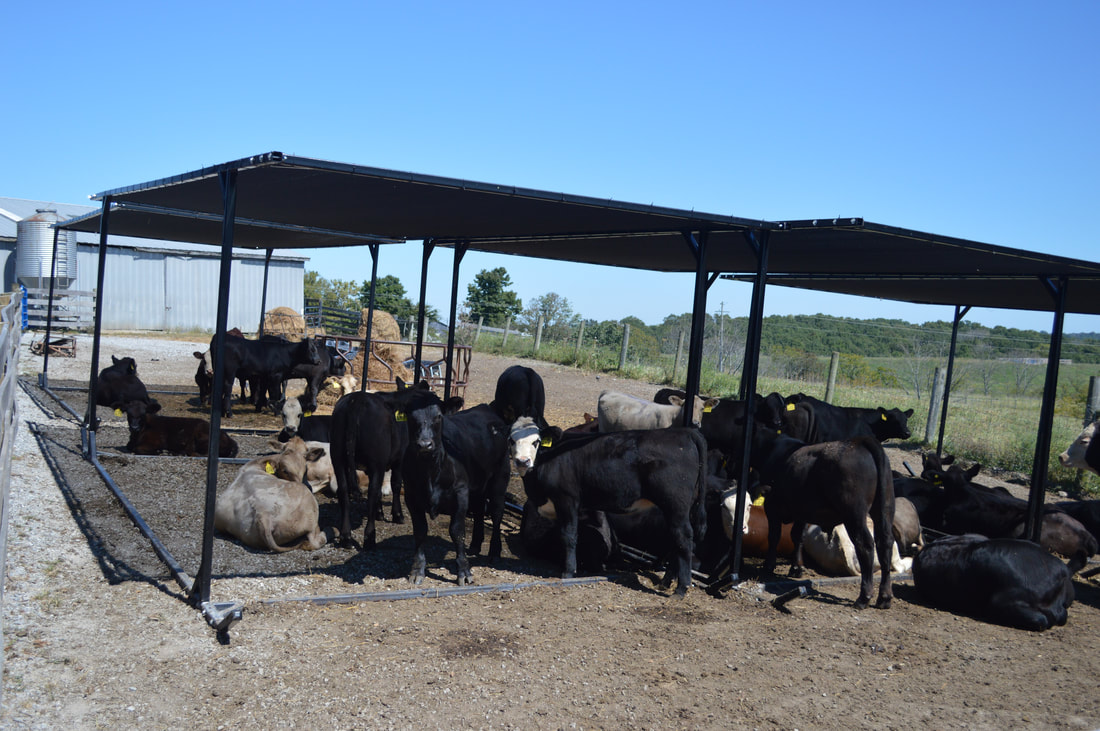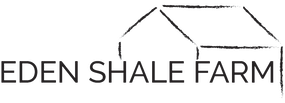|
Dr. Steve Higgins, University of Kentucky Prior to 2012, Eden Shale Farm was a demonstration farm controlled by the University of Kentucky (UK). Nine hundred acres (450 acres in trees and 450 acres in arable land) were purchased in 1954 to assist the agricultural producers in the area with agricultural enterprises that could be profitable on the Eden Shale soil series. At one time, the farm raised grapes, strawberries, fruit trees, shitake mushrooms, Christmas trees, sheep, beef and dairy cattle, plus typical row crops grown in the bottoms to support the livestock operations. At one point, when it was controlled by UK, the farm employed nine year-round workers and up to eight day laborers. Today, the farm is strictly a beef cattle operation managed by one and a half full-time employees working for the Kentucky Beef Network. Since the transition in 2013, a lot of reconstruction has been needed to reprogram agricultural facilities that were not designed for beef cattle production. Even the Bull Barn, constructed around 1960 and once used as a bull test station, has needed updates and redesign as understanding of efficient design has increased. Many agricultural operations across the state have gone through similar transformations. In Kentucky, the arrangement of farming structures has been influenced more by social, economic, and political forces than by scientific or engineering input. This is unfortunate since the design of facilities is a means to an environmental end. For much of their lives cattle occupy environments that are man-made yet few systems are centered on the animal or providing efficiency for the producer. Since man-made structures may last for generations, any flaws or inefficiencies in the location or design of these facilities will affect chores, functionality, and the lives of animals, for decades. Unfortunately, poor facility design often adds to the drudgery of routine tasks and poor welfare for livestock. The building, structures, and facilities on the Eden Shale Farm are no exception. Several structures were built for discontinued agricultural, horticultural or livestock operations. However, where there are challenges, there are opportunities to modify structures or implement practices to improve efficiencies. With foresight and attention to design principles, existing structures can be reprogrammed to serve new purposes, which could be categorized as “conservation practices” or “innovative practices.” This publication details the Eden Shale Farm Design Objectives, which may be of interest to producers who are considering a reprograming project in the future or critiquing past projects. 1. System should have low labor requirements. Many producers have too many activities, pulling them in different directions and consuming precious time. Some producers have full-time or part-time jobs off the farm, leaving off-hours and weekends to accomplish chores. The time allocated to farming must be efficient. However, how the farm is laid out, travel distances, and built-in inefficiencies can make this difficult. 2. Facilities should provide an environment for animals that promote good animal health, rapid growth, and efficient utilization of feed. The environment, in a narrow sense, includes the air the animal breathes, the surface on which it stands, the number of its social group, the space provided to move, eat, and drink, and the means by which it is confined. Many health issues and diseases can be prevented or controlled by providing a proper environment and management. Practices that fall under this category would include rotational grazing, alternative water stations, feed and calving barns with bedding, and winter-feeding facilities. 3. Capital cost should be kept low. A producer should try to work with what they already have. Reprogramming old structures for new purposes can reduce the cost of investment. It is important to evaluate the structural integrity of old structures prior to renovation. Developing shelters or safe winter calving areas can be profitable if severe weather conditions develop during a time when calving takes place. Losses that might occur in one season could have been used to pay for construction/renovation for good practices. We designed conservation or innovative systems for beef cattle by reprogramming the existing tobacco, dairy, sheep, and bull barns. At the same time, we recycled, repurposed, and reused materials to improve operations. Old cinder blocks, used tires, and hot blocks are just a few examples of the materials used to save money. In some cases, these materials were already on the farm. Selling a pile of scrapped wire fencing enabled us to free up an excellent building spot. The proceeds from our recycling were used to fund a large self-feeder. 4. The system should minimize the use of energy and other inputs. A producer should take advantage of free work or free energy. Gravity-fed rainwater harvesting systems have been installed to reduce city water costs. Solar power and wind turbines have been installed to reduce grid energy dependence. Centralized operations are in place to reduce fuel costs and travel time. The overall holistic management system reduces the use of inputs through a conservation system created between plants, animals, and soil. 5. Nutrients present in waste should be recoverable as fertilizer or in some other way. Animal manure is accumulated on any farm and Eden Shale is no different. Since it is already there, it must be moved out of the way. Storage structures have been installed to contain manure and bedding using recycled concrete bin blocks and railroad ties produced from recycled plastic. The land application of waste products in the form of animal manure, soiled forages, and bedding is conducted according to nutrient management planning guidelines in order to reduce inorganic fertilizer costs, improve soil quality, and reduce off-farm pollution. 6. The risk of economic loss and catastrophic failures should be kept low. Heifer calves represent potential mommas on a cow-calf operation. Steer calves represent cash flow for the farming operation. At Eden Shale, there has been one large project, implemented over several years, to create a heifer calving hub. (See image below). This was created to ease management but mostly to create an optimum environment for calves to thrive. History from the previous management has shown that funds spent on this project have created economic benefits within one to three years. 7. There should be adequate protection against theft and vandals. No one wants to have his or her possessions stolen or vandalized. Sites chosen for gates provide security and visibility of potential visitors and trespassers. The location of farm gates doubly serve to facilitate animal handling and better circulation of the herd. Gates and buildings are kept locked to keep livestock and equipment safe. It takes more time and effort to unlock them in the morning, but we feel more comfortable at night. 8. The system should be easy to operate and maintain. Installed systems have been designed so that they can be operated using existing or readily available off-the-shelf equipment. Automation has been incorporated to reduce labor. Cheaper versions of almost anything can be found. However, you get what you pay for. For example, the best gate purchased is usually the last one purchased. The cost of implementing new practices and designs can be greatly reduced by providing labor, equipment, and maintenance yourself. We call it “do-it-yourself conservation.” 9. Start-up and clean-up problems should be minimized. We focused on efficient farm operation by developing and operating facilities where multiple groups of cattle can be managed with minimal labor, feed and water, and energy inputs, while improving herd performance and creating minimal waste or recyclable wastes. 10. Odors, dust, flies, pollution (water, air, and visual), and other nuisance factors should be controlled. The practices that we installed were designed to minimize nuisance issues. One of these practices was the use of bedding to control moisture and reduce flies. Flooring materials have been designed and installed to provide drainage and reduce bedding requirements. Manure stack pads have been installed to ease the task of manure removal. 11. The system should make intelligent use of available resources. Creating efficiency to improve the quality and quantity of effort for 1.5 workers is important. Creating intelligent design and use of available resources is equally important. The overarching principles are to provide pure air, pure water, and pure land. The agricultural and engineering properties of the Eden Shale soils are known, due to careful review of the Soil Survey. Several management practices have been implemented to increase soil organic matter and to increase the infiltration rate of water in soil resources to improve forage production. The soils have a high clay content, are easily compacted, and have an ability to create sticky and slippery mud. Manure applications are used to improve soil fertility, infiltration, and water holding capabilities, while reducing compaction of soils. Ideal hay feeding structures and all-weather surfaces have been constructed to feed and to reduce damage to pastures. Drainage around structures has been implemented to move water, which could compromise the foundation, away from the structures. Buildings have been reprogrammed to harvest water, ease management, and provide an optimum environment for cattle production. Ventilation of buildings has been improved and shade structures have been constructed to improve the utilization of pastures for rotational grazing and improve herd welfare. Good agricultural employees are a resource and the employees at the Eden Shale Farm have received additional training and skills to improve this essential resource. 12. The system should protect animal welfare by housing and handling the animals in a safe and humane fashion. This has been accomplished by adopting the Five Freedoms: Freedom from Hunger and Thirst, Freedom from Discomfort, Freedom from Pain, Injury or Disease, Freedom to Express Normal Behavior, Freedom from Fear and Distress. As obvious as this may seem, water and feeding systems have been improved. All-weather surfaces, barn flooring systems, bedding, and ventilation have improved cattle comfort. These modifications have in no small way reduced morbidity and mortalities of cattle. Improving animal welfare has a positive effect on profitability, while reducing costs and inputs.
The first seven objectives address the operation’s profitability by reducing costs. Eden Shale Farm operates off its profits from the sale of cattle at livestock markets. No checkoff dollars are used to support the farm. Objectives 8 and 9 are for the convenience of the operator. They are desirable, but not at the cost of profitability. Such items may, under certain circumstances, be traded off to achieve a higher priority item. However, private operations may view these as high priority items that create convenience and improve quality of life. These objectives are and will be of greater importance to younger producers who want to spend less time working and more time with family. Objectives 10 and 11 are examples of social and sustainability concerns, which may be imposed by the operator or by zoning or regulatory agencies, which could also have implications on productivity. Objective 12 is the responsibility of every stockman and has been shown to increase productivity of cattle. Thoughtful consideration and planning of facility design can be achieved by utilizing these objectives for guidance. Implementation of practices supporting these objectives may increase productivity, increase ease of operation, and improve the overall workflow at the farming operation. Comments are closed.
|
Archives
June 2024
Categories
All
Welcome |
CONTACT US |
EMAIL SIGN UP |
|
Eden Shale Farm
245 Eden Shale Rd. Office: (859) 278-0899 Owenton, KY 40359 Fax: (859) 260-2060 © 2021 Kentucky Beef Network, LLC.. All rights reserved.
|
Receive our blog updates
|




 RSS Feed
RSS Feed
